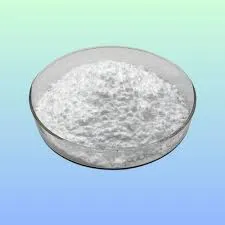
Oct . 04, 2024 16:39 Back to list
cellulose ether
Cellulose ether is a versatile and widely used class of compounds that are derived from cellulose, a natural polymer obtained from plant cell walls. As a vital ingredient in various industries, cellulose ether plays a key role in enhancing the properties of numerous products, making it an essential component in modern applications.
One of the most notable features of cellulose ether is its ability to dissolve in water, forming a viscous solution. This property is exploited in many industrial processes, including pharmaceuticals, food production, and construction. In the pharmaceutical industry, cellulose ethers are used as excipients in tablets, providing controlled release of active ingredients and improving the consistency of formulations. They also act as thickening agents and stabilizers in liquid medicines, ensuring the proper texture and efficacy of the product.
In the food industry, cellulose ethers are utilized as food additives, providing a range of functionalities. They enhance texture, improve moisture retention, and act as emulsifiers in products such as sauces, dressings, and dairy items. By modifying the viscosity and stability of food products, cellulose ethers contribute significantly to consumer satisfaction. Moreover, they can be used to create low-calorie and low-fat alternatives, as they improve mouthfeel without adding excessive calories.
Construction is another significant sector that benefits from cellulose ether
. It is used in various construction materials, including cement-based products, tile adhesives, and plasters. By improving workability and adhesion, cellulose ethers facilitate easier application and better performance of these materials. Their water-retaining properties are especially crucial in preventing early drying, which can lead to shrinkage and cracking in concrete structures.cellulose ether

Furthermore, cellulose ether is prized for its environmental compatibility. As a derivative of renewable resources, it aligns well with the growing emphasis on sustainability and eco-friendly practices in today's world. By replacing synthetic additives with cellulose ethers, industries can reduce their ecological footprint while still achieving high levels of performance in their products.
The production of cellulose ethers involves chemical modification of cellulose, which can be achieved through various processes, including etherification. The resulting products can vary in terms of their chemical structure, leading to different properties and functionalities. Common types of cellulose ethers include methyl cellulose, hydroxypropyl methyl cellulose (HPMC), and carboxymethyl cellulose (CMC), each tailored for specific applications.
In conclusion, cellulose ether is an indispensable material that contributes to a wide range of applications across various industries. Its unique properties, derived from cellulose, enhance the performance of products while promoting sustainability. As research continues to explore new formulations and applications, the significance of cellulose ether in advancing technology and improving product quality will likely grow even further in the future.
-
Versatile Hpmc Uses in Different Industries
NewsJun.19,2025
-
Redispersible Powder's Role in Enhancing Durability of Construction Products
NewsJun.19,2025
-
Hydroxyethyl Cellulose Applications Driving Green Industrial Processes
NewsJun.19,2025
-
Exploring Different Redispersible Polymer Powder
NewsJun.19,2025
-
Choosing the Right Mortar Bonding Agent
NewsJun.19,2025
-
Applications and Significance of China Hpmc in Modern Industries
NewsJun.19,2025







